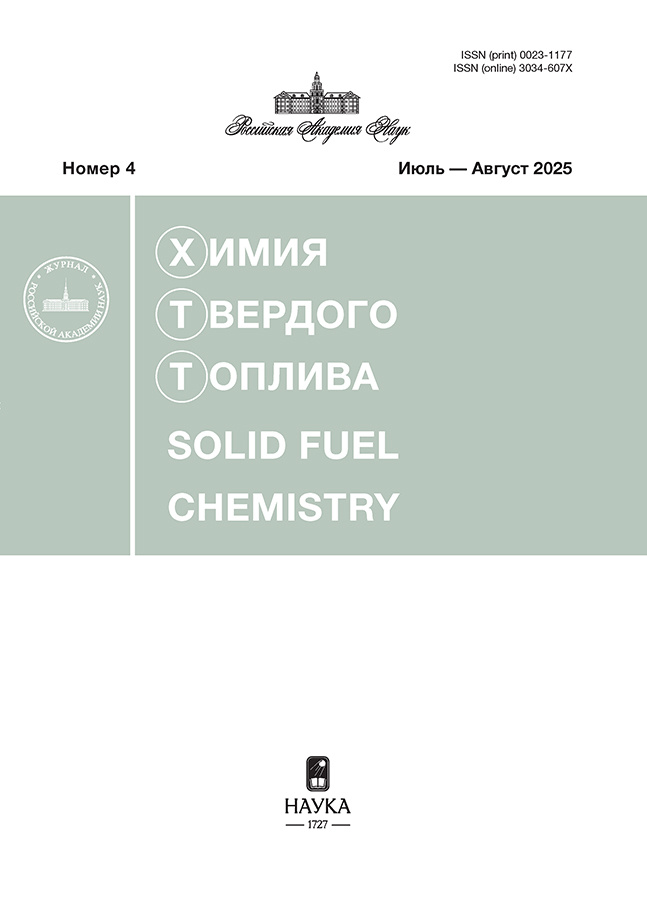The Effect of Moisture on the Characteristics of Co-Incineration of Pulp and Paper Sludge and Municipal Waste
- Authors: Maryandyshev P.A.1, Brillard A.2, Terekhin A.P.1
-
Affiliations:
- Northern (Arctic) Federal University
- Universite de Haute-Alsace
- Issue: No 4 (2025)
- Pages: 48-56
- Section: Articles
- URL: https://rjeid.com/0023-1177/article/view/691079
- DOI: https://doi.org/10.31857/S0023117725040052
- EDN: https://elibrary.ru/lvvdsy
- ID: 691079
Cite item
Abstract
The combustion behavior of a wet mixture of sludge from a pulp and paper plant and municipal waste is analyzed through complementary experiments. The collected mixed sludge was first naturally dried to decrease its initial moisture percentage to 5–9%. Pure water with mass proportions between 30 and 60% was added to the naturally dried samples to analyze their combustion behavior. Thermogravimetric experiments were carried out on the dried and humidified samples under air and applying heating rates between 5 and 100°C/min. The thermogravimetric profiles and the heat flows of the dried and humidified samples were compared. The CO, CO2, and total hydrocarbons emissions were measured during further combustion experiments carried out under isothermal temperatures of 600, 700, 800, or 900°C.
About the authors
P. A. Maryandyshev
Northern (Arctic) Federal University
Email: p.marjyandishev@narfu.ru
163000 Arkhangelsk, Russia
A. Brillard
Universite de Haute-Alsace
Email: alain.brillard@uha.fr
68100 Mulhouse, France
A. P. Terekhin
Northern (Arctic) Federal University
Email: trhnlx@yandex.ru
163000 Arkhangelsk, Russia
References
- Gavrilescu D. // Environmental Engineering and Management Journal. 2008. V. 7. P. 537. https://doi.org/10.30638/eemj.2008.077
- Bajpai P. Pretreatment of Sludge. In: Management of Pulp and Paper Mill Waste. Springer International Publishing, Cham. 2015. P. 31.
- Huilinnir C., Villegas M. // Bioresource Technology. 2014. V. 157. P. 206. https://doi.org/10.1016/j.biortech.2014.01.109
- Zawieja I. // Desalination and Water Treatment 2023. V. 301. P. 277. https://doi.org/10.5004/dwt.2023.29790
- Hu J., Shen Y., Zhu N. // Waste Management. 2023. V. 169. P. 70. https://doi.org/10.1016/j.wasman.2023.06.033
- Yaras A., Demirel B., Akkurt F., Arslanoglu H. // Biomass Conversion and Biorefinery. 2021. V. 13. P. 2007. https://doi.org/10.1007/s13399-020-01232-9
- Yu Y.H., Kim S.D., Lee J.M., Lee K.H. // Energy. 2002. V. 27. P. 457. https://doi.org/10.1016/S0360-5442(01)00097-4
- Chiang K.-Y., Lu C.-H., Liao C.-K., Hsien-Ruen Ger R. // International Journal of Hydrogen Energy. 2016. V. 41. P. 21641. https://doi.org/10.1016/j.ijhydene.2016.06.199
- Coimbra R.N., Paniagua S., Escapa C., Calvo L.F., Otero M. // Renewable Energy. 2015. V. 83. P. 1050. https://doi.org/10.1016/j.renene.2015.05.046
- Yin Y., Yin H., Yuan Z., Wu Z., Zhang W., Tian H., Feng L., Cheng S., Qing M., Song Q. // BioEnergy Research. 2021. V. 14. P. 1289. https://doi.org/10.1007/s12155-021-10248-6
- Lin Y., Ma X., Peng X., Yu Z., Fang S., Lin Y., Fan Y. // Fuel. 2016. V. 181. P. 905. https://doi.org/10.1016/j.fuel.2016.05.031
- Shao J., Yuan X., Leng L., Huang H., Jiang L., Wang H., Chen X., Zeng G. // Bioresource Technology. 2015. V. 198. P. 16. https://doi.org/10.1016/j.biortech.2015.08.147
- Kangash A., Kehrli D., Brillard A., Maryandyshev P., Trouve G., Lyubov V., Brilhac J.-F. // Fuel. 2022. V. 316. P. 123343. https://doi.org/10.1016/j.fuel.2022.123343
- Ling W., Xing Y., Hong C., Zhang B., Hu J., Zhao C., Wang Y., Feng L. // Science of The Total Environment. 2022. V. 845. P. 157376. https://doi.org/10.1016/j.scitotenv.2022.157376
- Gong K., Li X., Liu H., Cheng X., Sun D., Shao Q., Dong M., Liu C., Wu S., Ding T., Qiu B., Guo Z. // Carbon. 2020. V. 156. P. 320. https://doi.org/https://doi.org/10.1016/j.carbon.2019.09.046
Supplementary files










